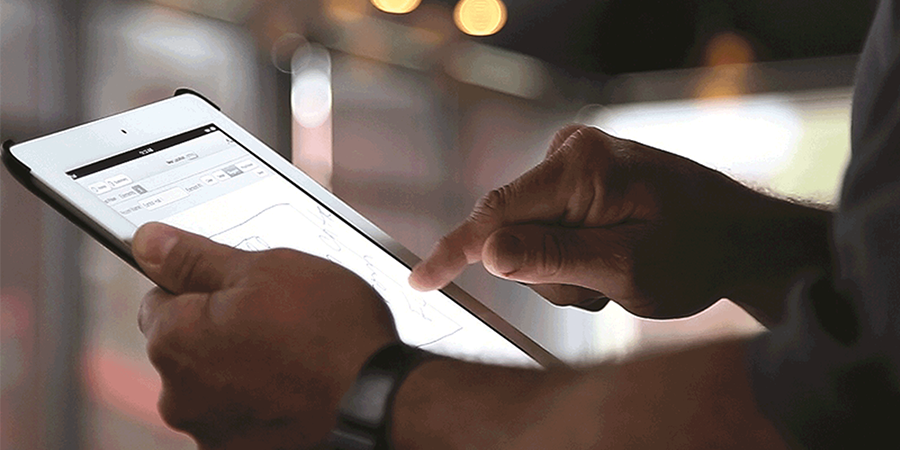
We’ve heard from many lighting retrofit companies, especially those in states with more rigid lock-down restrictions, that even if their sales efforts get them past the gate-keeper to a live prospect, getting into the facility for an audit has been a non-starter. The contractors seem to get shut down before they can even make a valid, data-driven case.
Thankfully, the retrofit world is gifted with many out-of-the-box, creative thinkers that seem to engineer their way around many of these initial objections. Many have come up with ways of conducting a “virtual” audit using creative digital methods. Often, the results of these methods provide good enough information to make the case for “getting in” more powerful.
Do you really need to do a virtual audit?
Sometimes the “no one gets in our buildings” argument turns out to be an initial, sales-resistant, knee-jerk reaction against having to deal with a salesperson at that moment. This is more or less a convenient excuse to put the salesperson off until later. Sometimes, there are valid reasons that access is being denied (nursing facilities or retirement homes with high-risk occupants being examples).
Before going down the virtual audit path, many contractors attempt to create a credible, data-based example of the potential value that the retrofit can bring to the prospect’s business and point out that a slow time, or an empty building is a perfect time to consider such an improvement to their facility. Top that off with the fact that lighting professionals are considered essential workers in most states along with the pledge that the lighting team will wear appropriate personal protective equipment and follow strict social distancing protocol, and the contractor has fighting chance of sidelining the “no access” objection.
But, if that line of reasoning fails, below are a few ideas for the virtual approach.
Augmented Reality
Many industry pundits and specifically some utilities and program implementers have suggested that their trade allies partake in virtual audits through some form of augmented reality. Whether it’s a recorded walkthrough using an augmented reality app live stream or a live interaction through a skype call, the approach entails having someone privy to access to the building (engineer or facility personnel) and digitally capture the space with either their “live” auditor co-pilot tethered digitally or record the session complete with digital mark-ups for later consumption by the auditor and project developer.
The pros of this approach include:
- It’s better than no audit at all
- Depending on the on-location person’s technical skills and attention to detail, you may get reasonable enough details to create at minimum a budgetary quote, which can help sell the concept and get you in the door for a real sales opportunity
The cons include:
- It requires two people rather than just one to complete the audit
- Technical glitches may delay your progress
- You will still require a final walkthrough with your own personnel before agreeing to a final scope (which is fine as long as you are moving the opportunity forward)
"SketchUp" Using Google Earth®
I recently spoke to a customer about what they are doing to in lieu of building access and he had some interesting insights. He works for a contracting company that generally quotes high-bay solutions for large warehouse type buildings (1M+ Sq. Ft. and larger).
To generate interest as well as pre-qualify the opportunity, they will take the following steps:
- Using Google Earth® and get the length/width roof dimension of the building and then utilize Google Earth’s 3D capabilities to estimate the building’s height
- With that information, they can sketch up a close rendition of the current ceiling layout and lighting grid
- For further insight, they can contact the building engineer or safety manager who can tell them whether they have 1,000 watt metal halide high bays or something else (if unable, information can be assumed for their estimate)
- The ultimate goal is to get to a rough estimate of the project investment and expected savings (of course using the 6 most helpful sales metrics)
- Estimate in hand, they will contact the decision maker and provide an evidence-based estimate of what they can do for the customer without stepping foot at the location. Our client mentions that his estimate in terms of fixture counts and layout so close to reality that he earns instant credibility with the prospect.
- The aim of this approach is to “cut to the chase” quickly and if the decision maker buys in conceptually to the potential savings, he’s earned the right to verify his estimates and move to an official proposal
- If there is no interest, he can move on quickly and not waste time traveling and auditing an opportunity that is doomed not to convert anyway
- Results: His prospect call to opportunity ratio has doubled!
Deputize the building engineer
For lighting companies who use SnapCount software, they have gotten used to quickly capturing detailed site data in order to complete an accurate audit enabling them to deliver a compelling, credible and differentiated proposal.
Familiarity with SnapCount has given a few clients the idea that a building engineer could download the SnapCount app and audit the building on their behalf. The SnapCount user can walk the engineer through a quick “how-to” session via web meeting, and allow them to provide an accurate space-based rendition of where all the fixtures reside, their hours of operation and just enough detail to craft a credible proposal. Also, the SnapCount Audit App has recently been ported to operate on a cell phone, so if the engineer doesn’t have access to a tablet, it isn’t a showstopper.
The pros:
- You have an “audit”. While it may not reflect the work product that your team is used to providing, it may at least provide enough facility information to make a credible case (plus, they’ll be impressed with your innovative thinking)
Some cautions:
- Many SnapCount customers live by the mantra that “every good lighting project begins with a quality audit”, and the building engineers first attempt may not meet your standards. An engineer’s first audit attempt won’t usurp your excellent standards.
- You won’t get the opportunity to sell in person and ask the “between the lines” questions (like where are all the panel boxes, or has the building manager complained about safety) which provide candid clues on how to win the sale.
- Some of the SnapCount customers we’ve interviewed expressed concern that building engineers may be too busy or may “lack motivation” to take on the role of a temporary auditor, they may also lack enough lighting-specific knowledge to properly identify existing fixtures (something the camera function of SnapCount can help the with).
Regardless, you could consider this approach another "tool in the bag" to initiating further engagement with the prospect.
Using 5 Dominant Fixtures as a Proxy
This final strategy was adapted from a recent webinar I conducted with Mark Jewell and need not be limited to only situations where building access is limited.
While the debate whether to offer free audits rages on, the fact remains that conducting thorough facility audits is an expensive cost of doing business for retrofit contractors, especially with little assurance that the effort would result in the customer moving forward.
A perhaps better approach would to be provide a “virtual sampling” of the facility’s 5 most dominant fixture types (quickly discovered via a call or visit to the building engineer) to represent the potential savings available to the facility. This also serves to facilitate a broader conversation around the prospect’s value threshold and the savings that would cause them to move forward with the project without the time and expense of conducting a full-blown audit.
Generating a retrofit proposal with only 5 fixture types offers a powerful proxy of the value available to the prospect. For example, illustrating that the sample proposal would deliver a Savings-to-Investment Ratio of 1.7 (returning $1.70 for every $1 invested) you can quickly understand whether this exceeds or falls short of the CFO’s required investment value threshold. If not, you can be thankful you and your team didn’t waste your time auditing 1 million square feet of manufacturing space. If so, you’ve shown your expertise and have earned the right to take a deeper dive with the assurance that your opportunity is qualified.
For the rainmakers in the lighting retrofit industry, your job is to keep project opportunities constantly moving forward. In the midst of uncertain times that may cause restrictions to facility access, virtual audits offer an additional tool in your bag to qualify and illustrate your value to decision makers.





Share this post: